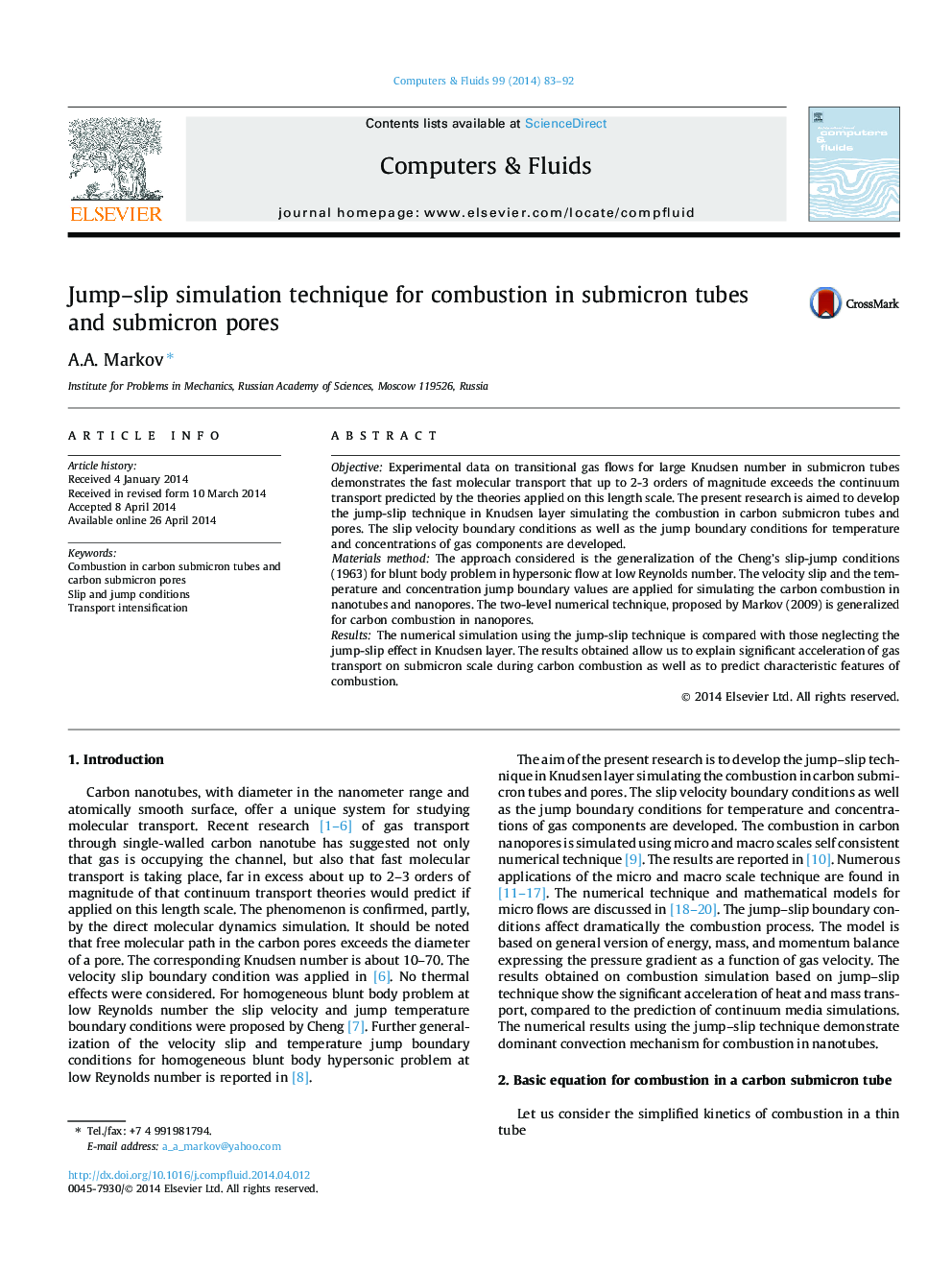| Article ID | Journal | Published Year | Pages | File Type |
|---|---|---|---|---|
| 761935 | Computers & Fluids | 2014 | 10 Pages |
•The velocity slip and temperature and concentration jump boundary conditions are proposed for gas flows at submicron scale.•The two-level numerical technique, proposed by Markov (2009) is generalized for carbon combustion in nanopores.•We report the principle role of advection transport for combustion in submicron dispersed sample.•The results allow us to predict characteristic features of combustion in wide range of similarity parameters.
ObjectiveExperimental data on transitional gas flows for large Knudsen number in submicron tubes demonstrates the fast molecular transport that up to 2-3 orders of magnitude exceeds the continuum transport predicted by the theories applied on this length scale. The present research is aimed to develop the jump-slip technique in Knudsen layer simulating the combustion in carbon submicron tubes and pores. The slip velocity boundary conditions as well as the jump boundary conditions for temperature and concentrations of gas components are developed.Materials methodThe approach considered is the generalization of the Cheng’s slip-jump conditions (1963) for blunt body problem in hypersonic flow at low Reynolds number. The velocity slip and the temperature and concentration jump boundary values are applied for simulating the carbon combustion in nanotubes and nanopores. The two-level numerical technique, proposed by Markov (2009) is generalized for carbon combustion in nanopores.ResultsThe numerical simulation using the jump-slip technique is compared with those neglecting the jump-slip effect in Knudsen layer. The results obtained allow us to explain significant acceleration of gas transport on submicron scale during carbon combustion as well as to predict characteristic features of combustion.
